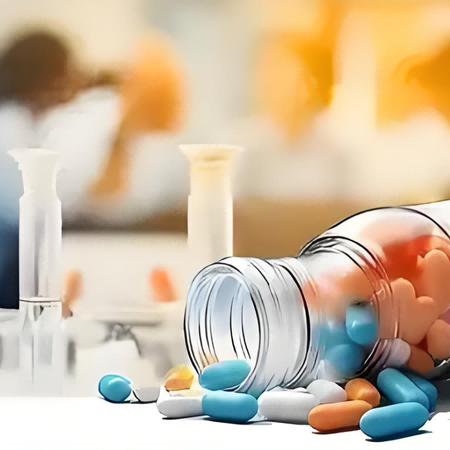Simplifying Sterile Filtration in Modern Laboratories
Sterile filtration is a fundamental process in scientific laboratories that require contamination-free solutions. From microbiology and molecular biology to pharmaceuticals and diagnostics, maintaining the sterility of liquids such as culture media, buffers, and reagents is critical for accurate and reproducible results. Among the many tools available for achieving sterility, the bottle top filter has become a preferred solution due to its efficiency, simplicity, and reliability.
The bottle top filter is designed to offer direct, sterile filtration by securely attaching to a standard laboratory bottle. It combines ease of use with high-level performance, eliminating the need for traditional, often cumbersome filtration setups. Laboratories benefit from reduced risk of contamination, quicker processing times, and the ability to handle various volumes and solution types—all while maintaining sterility and consistency.
Core Features of Bottle Top Filters for Sterile Filtration
Direct Filtration Into Sterile Bottles
One of the main advantages of using a bottle top filter is its ability to filter directly into a sterile receiving bottle. This setup eliminates intermediate transfer steps, reducing the risk of contamination and exposure. The filter unit typically includes a pre-attached membrane and is compatible with vacuum filtration to accelerate the process.
By maintaining a sealed system throughout the procedure, bottle top filters offer a safer and cleaner method of liquid handling. This feature is particularly valuable when dealing with sensitive or irreplaceable solutions, where even minor contamination can compromise results.
Pre-Sterilized and Ready to Use
Bottle top filters are usually pre-sterilized and individually packaged, making them ready for immediate use. This eliminates the need for autoclaving or additional cleaning, saving valuable time and effort. Each filter is manufactured and packaged under controlled conditions, ensuring that the filtration system is free from microorganisms or particulates upon opening.
In time-sensitive environments such as clinical diagnostics or high-throughput research labs, having ready-to-use filtration tools enhances productivity and consistency. Pre-sterilization also aligns with good laboratory practice (GLP) and regulatory compliance.
Performance Advantages in Laboratory Workflows
High Flow Rates with Low Binding Membranes
Bottle top filters are engineered for speed without compromising sterility. Most units are designed with low-binding membranes such as polyethersulfone (PES), which not only facilitate fast flow rates but also prevent loss of valuable analytes like proteins, antibodies, or enzymes.
This balance of speed and recovery is especially important in applications such as protein purification or media preparation, where solution clarity and molecular integrity are both required. Using the appropriate membrane helps maximize throughput while maintaining the accuracy of results.
Suitable for a Wide Range of Volumes
Bottle top filters are available in various sizes and reservoir capacities, making them adaptable to diverse workflow demands. Whether filtering 150 mL for a small experiment or processing a full liter of culture media, laboratories can select a filter that matches their specific volume requirements.
The availability of multiple sizes and designs ensures that bottle top filters integrate seamlessly into any lab setting. For large-scale processing, high-capacity filters with reinforced necks and wider membranes support faster filtration and greater stability.

Achieving Reliable Sterility in Sensitive Applications
Sterile Preparation of Cell Culture Media
Sterility is a non-negotiable requirement in cell culture labs. Bottle top filters allow for the sterilization of media containing heat-sensitive components, such as growth factors or antibiotics, which cannot be autoclaved. Using a 0.22 μm bottle top filter ensures the removal of bacteria and particulate matter while preserving the bioactivity of the solution.
This method supports consistent experimental conditions and extends the viability of cultured cells. Because bottle top filters are easy to use and require minimal setup, they also reduce the risk of user error, contributing to more reproducible and accurate outcomes.
Filtration of Clinical and Diagnostic Reagents
In clinical and diagnostic laboratories, the sterility of solutions such as diluents, standards, and calibration fluids is crucial. Bottle top filters provide an efficient and validated method for filtering such reagents. Their design ensures minimal sample loss and excellent contaminant removal, aligning with the strict regulatory standards often required in these fields.
By using bottle top filters, laboratories can confidently prepare sterile solutions without additional sterilization equipment or complicated protocols, ensuring both safety and compliance.
Choosing the Right Bottle Top Filter for Your Needs
Selecting the Ideal Membrane Material
The effectiveness of a bottle top filter depends heavily on the type of membrane it uses. For sterile filtration, PES is widely favored due to its low protein binding and high chemical resistance. Cellulose acetate (CA) is another option known for its gentle interaction with biological molecules, while PTFE membranes are preferred when filtering aggressive solvents or corrosive liquids.
Choosing the correct membrane material ensures compatibility with the solution being filtered and helps maintain the accuracy and sterility of results. Each application may require a unique membrane, making it essential to match the filter to the task.
Pore Size Matters
Pore size is a defining feature of any filter. In sterile filtration, the 0.22 μm pore size is considered the gold standard for bacterial removal. Some applications may tolerate a 0.45 μm pore size for basic clarification, but for true sterility, the finer pore size is essential.
Bottle top filters typically offer clear labeling of their pore sizes, helping users select the appropriate filter with ease. Understanding the requirements of your application allows for optimal filtration performance with minimal trial and error.
Enhancing Safety and Minimizing Contamination
Closed System Reduces Exposure
One of the biggest risks in sterile workflows is exposure to environmental contaminants during handling. Bottle top filters are designed to form a closed system between the filter and the receiving bottle. This reduces the likelihood of contamination from the air, hands, or work surfaces.
The closed design also helps protect the user from hazardous substances, especially when dealing with biological or chemically reactive samples. For biosafety and personal protection, this design is a critical advantage over traditional open filtration setups.
Single-Use Design Promotes Cleanliness
Bottle top filters are intended for single use, ensuring that no residue or biological carryover compromises future experiments. Reusing filters, even after cleaning, can introduce variability and increase the chance of contamination. Single-use filters remove this risk and provide consistency across experiments.
This aspect is especially important in regulated labs or those following ISO or GMP protocols, where traceability and sterility are fundamental. Disposable filtration tools support cleanroom practices and efficient quality control.
Practical Benefits of Using Bottle Top Filters
Time-Saving and Cost-Effective
Using a bottle top filter reduces the number of steps required in sterile solution preparation. There’s no need for additional sterilization cycles or elaborate glassware assemblies. The simplicity of design saves time, reduces cleaning labor, and minimizes maintenance.
In the long run, the use of pre-sterilized, ready-to-use filters translates to lower operational costs by eliminating the need for complex sterilization infrastructure. The cost of the filter itself is often offset by the time saved and the improved accuracy it delivers.
Ergonomic and User-Friendly Design
Bottle top filters are designed for ease of handling. Many come with features like wide mouths for easier liquid pouring, ergonomic grips for twisting onto bottles, and volume gradations for better measurement control. These user-friendly elements reduce fatigue during repetitive tasks and help prevent spillage.
For busy laboratory personnel, ergonomic equipment makes a significant difference in daily productivity and comfort. Choosing tools that are both effective and easy to use enhances workflow satisfaction and overall lab performance.
Applications Beyond Basic Filtration
Use in High-Throughput Screening and Automation
In laboratories handling dozens or hundreds of samples daily, the need for consistent and rapid filtration is paramount. Bottle top filters are compatible with vacuum manifolds and other automated systems, making them suitable for use in high-throughput screening protocols.
Their consistent design and high flow capacity allow for predictable filtration times and reduced variability, which are essential in automated workflows and repetitive processing environments.
Support for Specialized Processes
Advanced bottle top filter models are also available with specialized membranes for niche applications. These include virus removal, endotoxin reduction, and fine particle filtration in nanoparticle research. Choosing the right model allows these specialized processes to benefit from the same efficiency and sterility as standard filtration tasks.
With customizable features such as vented caps or dual-layer membranes, bottle top filters can be tailored to meet the evolving needs of modern scientific research and industrial applications.
FAQ
What makes a bottle top filter suitable for sterile filtration?
A bottle top filter is pre-sterilized, designed to fit securely on lab bottles, and equipped with 0.22 μm membranes to remove bacteria and particulates. Its closed system prevents contamination and supports sterility throughout the filtration process.
Can I use a bottle top filter for solvents or corrosive solutions?
Yes, but it depends on the membrane material. PTFE and nylon membranes are compatible with many solvents and corrosive substances. Always check chemical compatibility before selecting a bottle top filter for such applications.
How do I choose the right bottle top filter for my lab?
Consider your solution type, sterility requirements, volume capacity, and chemical compatibility. Choose a 0.22 μm membrane for sterile filtration and a membrane material suited to your sample. Also, ensure that the filter fits your lab bottle.
Are bottle top filters reusable?
No, bottle top filters are generally single-use devices. Reusing them can compromise sterility and filtration performance, especially in critical applications like cell culture or clinical diagnostics. Always use a new filter for each sample batch.
Table of Contents
- Simplifying Sterile Filtration in Modern Laboratories
- Core Features of Bottle Top Filters for Sterile Filtration
- Performance Advantages in Laboratory Workflows
- Achieving Reliable Sterility in Sensitive Applications
- Choosing the Right Bottle Top Filter for Your Needs
- Enhancing Safety and Minimizing Contamination
- Practical Benefits of Using Bottle Top Filters
- Applications Beyond Basic Filtration
- FAQ




